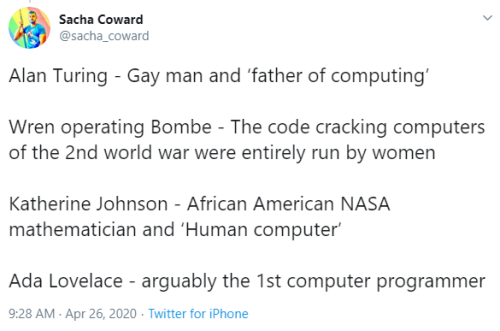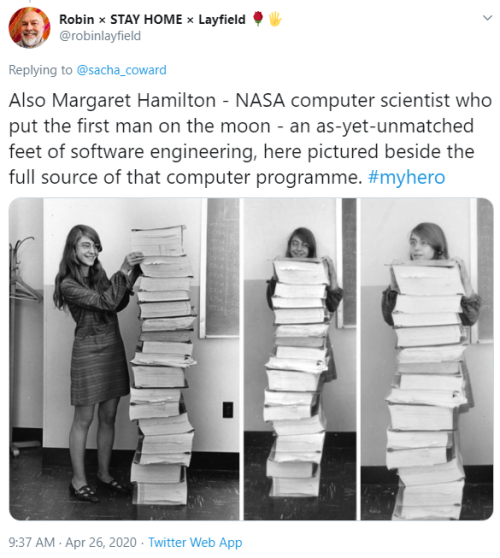Roman’s Five-Year Forecast: A Downpour Of Data!
Roman’s Five-Year Forecast: A Downpour of Data!
Our Nancy Grace Roman Space Telescope recently passed a major review of the ground system, which will make data from the spacecraft available to scientists and the public.
Since the telescope has a gigantic field of view, it will be able to send us tons of data really quickly — about 500 times faster than our Hubble Space Telescope! That means Roman will send back a flood of new information about the cosmos.

Let’s put it into perspective — if we printed out all of Roman’s data as text, the paper would have to hurtle out of the printer at 40,000 miles per hour (64,000 kilometers per hour) to keep up! At that rate, the stack of papers would tower 330 miles (530 kilometers) high after a single day. By the end of Roman’s five-year primary mission, the stack would extend even farther than the Moon! With all this data, Roman will bring all kinds of cosmic treasures to light, from dark matter and dark energy to distant planets and more!
Learn more about the Roman Space Telescope.
Make sure to follow us on Tumblr for your regular dose of space!
More Posts from Science-child and Others
“If you read the history of the development of chemistry and particularly of physics, you will see that even such exact natural sciences could not, and still cannot, avoid basing their thought systems on certain hypotheses. In classical physics, up to the end of the 18th century, one of the working hypotheses, arrived at either unconsciously or half-consciously, was that space had three dimensions, an idea which was never questioned. The fact was always accepted, and perspective drawings of physical events, diagrams, or experiments, were always in accordance with that theory. Only when this theory is abandoned does one wonder how such a thing could ever have been believed. How did one come by such an idea? Why were we so caught that nobody ever doubted or even discussed the matter? It was accepted as a self-evident fact, but what was at the root of it? Johannes Kepler, one of the fathers of modern or classic physics, said that naturally space must have three dimensions because of the Trinity! So our readiness to believe that space has three dimensions is a more recent offspring of the Christian trinitarian idea.”
— Marie-Louise von Franz, Alchemy: An Introduction to the Symbolism and the Psychology
“Electrostatic force is that which governs the motion of the atoms. It is the force which causes them to collide and develop the life-sustaining energy of heat and light, and which causes them to aggregate in an infinite variety of ways, according to Nature’s fanciful designs, and forms all these wondrous structures we see around us. It is, in fact, if our present views be true, the most important force for us to consider in Nature.”
–Nikola Tesla
“Tesla, Marvel Of The Future.” Brooklyn Citizen, August 22, 1897.

The Exploration Behind the Inspiration at NASA
Are we alone? How did we get here? Where are we headed?
At NASA, our mission is to explore. We visit destinations in our solar system and study worlds beyond to better understand these big questions.
We also dream. We dream of traveling to distant worlds, and what that might be like. In the video above you can see fanciful, imagined adventures to real places we’ve studied at NASA.
How We Did It
Check out how we created these otherworldly scenes in the video below. A NASA videographer used green screens to add motion and real people to bring life to our series of solar system and exoplanet travel posters.
Let’s dive into one example from the video. The shot of kayaking on Titan showcases the real rivers and lakes of liquid methane and ethane that slosh and flow on Saturn's largest moon. Titan's mysterious surface was revealed by our Cassini spacecraft, which also deployed the European Space Agency’s Huygens probe to the surface. The atmosphere on Titan is so thick, and the gravity so light, that with each strike of a paddle, you might be lofted above the swift current as you ride the tides through a narrow strait called the Throat of Kraken. NASA scientist Mike Malaska studies Titan and collaborated on the poster featured in the video. His research informed the artwork, and so did a hobby: kayaking. Those ultra-cold chemical seas might be even more of a challenge than shown here. Your boat might crack, or even dissolve, Malaska said.

We’ll learn more about Titan when our Dragonfly mission of dual quadcoptors — rotorcraft with eight blades each — visits the icy moon in 2034.
Science Never Stops
Our understanding of other worlds is always evolving, and sometimes we learn new details after we illustrate our science. In one of our travel posters, we show a traveler standing on the surface of exoplanet Kepler-16b with two shadows formed by the planet’s two suns. The planet does indeed orbit two stars, but with later size and mass refinements, we now think it would be hard to stand there and enjoy a binary sunset. There isn't a solid surface to stand on a gas planet, and that's what Kepler-16b now appears to be!
In addition to sharing how sublime science can be, these scenes are a reminder that there are lots of careers in the space program, not just scientist, engineer, or astronaut. A creative team at NASA’s Jet Propulsion Laboratory in Southern California produced the travel posters, originally to help share the work of NASA's Exoplanet Exploration Program. They are the result of lots of brainstorming and discussion with real NASA scientists, engineers, and expert communicators. The video versions of these spacey travel scenes were produced by visualization experts at NASA’s Goddard Space Flight Center in Greenbelt, Maryland.
All of this work is meant to inspire, and to explore the edge of possibility. It’s also an invitation. With science, we’re stepping into the future. Join us?
The Legacy of Viking
On this day in 1976, we landed an ambitious mission on Mars –– the Viking 2 mission.
One of a pair of identical spacecraft, Viking found a place in history when it became the first U.S. mission to successfully land on Mars and return images of the surface.

Viking imaged and collected different types of data on the Martian surface. It also conducted experiments specifically designed to look for possible signs of life.
These experiments discovered unexpected chemical activity in the Martian soil but provided no clear evidence for the presence of living microorganisms.

Viking didn’t find unambiguous signs of life on Mars, but it made astrobiologists wonder if we devised the right tests. To this day, the results from Viking are helping to shape the development of life detection strategies at NASA.

So, what’s next in our search for life?
Our Mars 2020 Perseverance rover is the first mission designed to seek possible signs of past Martian life. For astrobiologists, the answers to questions about Mars’ habitability are in Perseverance’s “hands.” The robot astrobiologist and geologist launched earlier this year on July 30 and will touch down on Mars on Feb. 18, 2021.

Discover more about Viking and the history of exploration at Mars with our “Missions To Mars” graphic history novel here.
Make sure to follow us on Tumblr for your regular dose of space: http://nasa.tumblr.com
What do you hope to find on the mars? / What would be the best possible outcome?
Why is the final phase so difficult?Sorry if I sound dumb,I'm just curious.Also,what will be the rover's first task after landing?




“I always remember having this fight with a random dude who claimed that ‘straight white men’ were the only true innovators. His prime example for this was the computer… the computer… THE COMPUTER!!! THE COM-PU-TER!!!
Alan Turing - Gay man and ‘father of computing’ Wren operating Bombe - The code cracking computers of the 2nd world war were entirely run by women Katherine Johnson - African American NASA mathematician and ‘Human computer’ Ada Lovelace - arguably the 1st computer programmer”
- Sacha Coward
Also Margaret Hamilton - NASA computer scientist who put the first man on the moon - an as-yet-unmatched feet of software engineering, here pictured beside the full source of that computer programme. #myhero
Grace Hopper - the woman that coined the term “bug”
- @robinlayfield
-
 itsgerges reblogged this · 1 year ago
itsgerges reblogged this · 1 year ago -
 itsgerges liked this · 1 year ago
itsgerges liked this · 1 year ago -
 squidsandthings liked this · 2 years ago
squidsandthings liked this · 2 years ago -
 appla1 reblogged this · 3 years ago
appla1 reblogged this · 3 years ago -
 onemanonegod liked this · 3 years ago
onemanonegod liked this · 3 years ago -
 lekaisernoir liked this · 3 years ago
lekaisernoir liked this · 3 years ago -
 saltythexfilesindianjonescop liked this · 3 years ago
saltythexfilesindianjonescop liked this · 3 years ago -
 technologistsinsync reblogged this · 3 years ago
technologistsinsync reblogged this · 3 years ago -
 lamprosx liked this · 3 years ago
lamprosx liked this · 3 years ago -
 artemisprowls liked this · 3 years ago
artemisprowls liked this · 3 years ago -
 whatifsandspheres reblogged this · 3 years ago
whatifsandspheres reblogged this · 3 years ago -
 spheremint4 liked this · 3 years ago
spheremint4 liked this · 3 years ago -
 durinsbride liked this · 3 years ago
durinsbride liked this · 3 years ago -
 ipayton liked this · 3 years ago
ipayton liked this · 3 years ago -
 marlunaroja liked this · 3 years ago
marlunaroja liked this · 3 years ago -
 thatgaywolf liked this · 3 years ago
thatgaywolf liked this · 3 years ago -
 charlesh55 liked this · 3 years ago
charlesh55 liked this · 3 years ago -
 treason-and-plot liked this · 3 years ago
treason-and-plot liked this · 3 years ago -
 john-erby liked this · 3 years ago
john-erby liked this · 3 years ago -
 hopestarie liked this · 3 years ago
hopestarie liked this · 3 years ago -
 pinkiepieaddict reblogged this · 3 years ago
pinkiepieaddict reblogged this · 3 years ago -
 rodica9001 liked this · 3 years ago
rodica9001 liked this · 3 years ago -
 n-0-blog liked this · 3 years ago
n-0-blog liked this · 3 years ago -
 iridescent-lightning reblogged this · 3 years ago
iridescent-lightning reblogged this · 3 years ago -
 ijwstw-blog reblogged this · 3 years ago
ijwstw-blog reblogged this · 3 years ago -
 whats-in-a-username liked this · 3 years ago
whats-in-a-username liked this · 3 years ago -
 papajs-blog liked this · 3 years ago
papajs-blog liked this · 3 years ago -
 cromodinamica liked this · 3 years ago
cromodinamica liked this · 3 years ago -
 farukmiah788333 liked this · 3 years ago
farukmiah788333 liked this · 3 years ago -
 eagleslee liked this · 3 years ago
eagleslee liked this · 3 years ago -
 the-no-dont-do-its reblogged this · 3 years ago
the-no-dont-do-its reblogged this · 3 years ago -
 the-no-dont-do-its liked this · 3 years ago
the-no-dont-do-its liked this · 3 years ago -
 luminouslumity reblogged this · 3 years ago
luminouslumity reblogged this · 3 years ago -
 q23443-blog liked this · 3 years ago
q23443-blog liked this · 3 years ago -
 luminouslumity liked this · 3 years ago
luminouslumity liked this · 3 years ago -
 acercrea reblogged this · 3 years ago
acercrea reblogged this · 3 years ago -
 suqnswallow29 reblogged this · 3 years ago
suqnswallow29 reblogged this · 3 years ago -
 genesplicer liked this · 3 years ago
genesplicer liked this · 3 years ago -
 the-telescope-times reblogged this · 3 years ago
the-telescope-times reblogged this · 3 years ago -
 the-telescope-times liked this · 3 years ago
the-telescope-times liked this · 3 years ago -
 diary-of-an-asthmatic reblogged this · 3 years ago
diary-of-an-asthmatic reblogged this · 3 years ago -
 tumblermark59 liked this · 3 years ago
tumblermark59 liked this · 3 years ago -
 angiopop liked this · 3 years ago
angiopop liked this · 3 years ago









